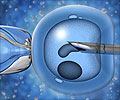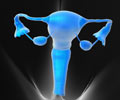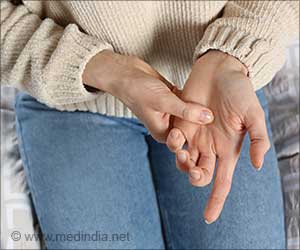A new study has identified genetic markers that will now make it possible to select eggs that may have the best chance of successful pregnancy after in vitro fertilization (IVF).
A new study has identified genetic markers that will now make it possible to select eggs that may have the best chance of successful pregnancy after in vitro fertilization (IVF).
This method developed by a research team led by Universite Laval scientist Marc-Andre Sirard, may not only increase the success rate of single embryo transfer, but also lessen the risk of multiple pregnancies.Usually eggs recovered in the course of the IVF process are enclosed by follicular cells that are removed before the actual fertilization procedure begins.
“While in the ovaries, these cells and the eggs are in very close interaction. A first experiment we conducted on bovine follicular cells led us to believe that these cells might possess specific markers that would be able to give us information about the quality of an egg,” explained Sirard.
For the study, the researchers recruited 40 eggs in a fertility clinic, and compared follicular cells surrounding eggs eventually leading to successful pregnancies—i.e. “good” eggs—to cells surrounding ovules that did not result in pregnancy. Through this comparison they identified 5 genes expressed more abundantly in follicular cells surrounding good eggs.
At present, the method for examining which embryos are to be transferred into a woman’s uterus is based on visible criteria such as appearance and division rate.
Sirard explained the limits of such a procedure, saying: “At least 30% of embryos that look normal through visual examination nonetheless show chromosome abnormalities.”
Advertisement
This method in combination with improved IVF techniques has led to an increase in multiple pregnancies. Even if doctors now tend to transfer fewer embryos, multiple pregnancies still occur in 30pct of couples who resort to IVF in North America and 23pct in European couples.
Advertisement
The details of the method developed by the researchers, for which an international patent application has been filed, are explained on the website of the scientific journal Human Reproduction.
Source-ANI
SRM/L










